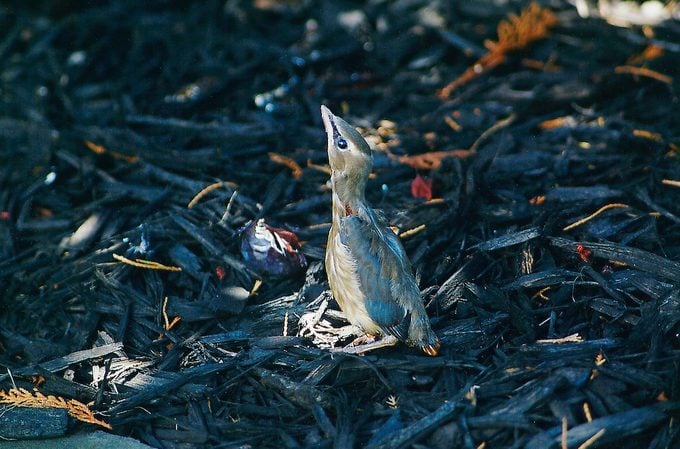All About Cedar Waxwing Baby Birds and Nests
Updated: Jan. 29, 2021
See photos of cedar waxwing babies and learn about cedar waxwing nests, including what the baby birds eat and when the parents build the nest.

Cedar Waxwing Nests
In the breeding season, flocks break up into pairs to raise cedar waxwing babies. Waxwings often nest in small colonies. Up to a dozen pairs may build their nests within an area of just a few acres, and adults from neighboring nests may fly off together to search for food. The breeding season for waxwings is unusually late in the year, another reflection of their fruit-eating habits. In many parts of North America, cedar waxwings are among the last birds to begin nesting activities. Especially in the north, they may not start building nests until late June or even July.
Most migratory birds will return to the same places over and over. The robins that nested above your porch this summer are most likely the same ones that nested there last year. The juncos that arrive at your bird feeder in early winter will probably stay until spring. But waxwings are not so consistent. According to banding studies, individual cedar waxwings seldom nest in the same area two years in a row.
Where do waxwings go in winter?
What Do Cedar Waxwing Babies Eat?
By the time cedar waxwing eggs hatch, wild fruits are ripening. Cedar waxwing baby birds mostly eat insects for the first couple of days, but soon after the nestlings eat mostly fruit.
Learn how to attract waxwings with berries.

What Does a Cedar Waxwing Baby Look Like?
Cedar waxwing babies look like the adults, but without the full head crest and a less defined face mask. One Birds & Blooms reader shared her experience seeing them in her yard. “Not long after suspecting that a pair of cedar waxwings had nested nearby, we spotted a cedar waxwing baby under our plum tree. Our golden retriever, Max, went right up to it, touching his nose gently to the bird’s bill. Up in the branches, part of a damaged nest remained. After a few days, the fledgling began stretching its wings and taking short bursts of flight. As we watched, we heard another cricket-like chirp in the shrubs and realized that more than one cedar waxwing baby had survived,” says Tina Bellotti of Orchard Park, New York.
Psst—here’s what to do if you find a bird nest with eggs or a baby bird.

“Indeed, we soon saw our fledgling fly into the neighbors’ trees, accompanied by a sibling. Their familiar chirps grew fainter, and we knew they were moving on. Then one evening out on our patio, we heard those crickety calls and saw four cedar waxwings flying overhead,” says Tina Bellotti.
Learn how to tell the difference between bohemian waxwings and cedar waxwings.




















